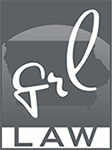Latin phrases are often found in many different modern-day concepts both inside and outside of the law. For example, caveat emptor (let the buyer beware), bona fide (in good faith), de facto (in fact), in abstentia (in absence), indicia (indications). Other Latin phrases are more common among lawyers, judges, and those who work in the legal field. Examples include, in limine (meaning at the threshold and is a motion filed by one party prior to trial to keep evidence from being heard), guardian ad litem (meaning guarding for the case and is generally an independent party appointed to represent a minor or person of limited competence), mens rea (meaning guilty mind and is generally required to commit a crime).
However, one such Latin phrase and concept is often devoid of recognition by the legally trained and layperson alike. Qui tam domino rege quam pro se ipso in hac parte sequitur, which means “he who sues in this matter for the king as well as for himself.” In short, these are called qui tam actions. I was playing poker when I first heard the phrase uttered by a colleague of mine. Having practiced for well over a decade, I did not want to be embarrassed by asking what the hell was a qui tam action, so the following Monday I started doing some research and what I found was a nifty little way for someone who is aware that an individual, business, or organization is defrauding the government to make a nice chunk of change by becoming a “whistleblower.”
Generally speaking, qui tam actions are a statutorily created legal cause of action that allows a government entity to recover civil damages from someone who has defrauded them. As part of that action, the “whistleblower” or “realtor”, is someone who notifies the government that they are being defrauded and agrees to participate with the government in prosecuting the individual or entity to recover those damages. As a result, the “whistleblower” is awarded a portion of the recovery including up to three times the amount of damages suffered by the government entity. These amounts can grow quite large depending on the complexity of fraud being perpetuated, the length of time the fraud has been perpetuated, and the number of fraudulent transactions, creating a significant financial incentive for individuals to out those who are defrauding the government.
Under Iowa State law qui tam actions are recognized under the Iowa False Claims Act which is codified in Chapter 685 of the Iowa Code. Under this chapter, an individual may bring a claim individually and for the State against any individual, entity, or organization who has defrauded the State out of money. In order for the individual to recover, the information must be disclosed within thirty (30) days of becoming aware of the information, the person must fully cooperate with the State in investigating the violation, there cannot be any pending litigation of the matter and the person must know have actual knowledge of pending investigation. These actions can be brought within six (6) years of the fraud being perpetuated. If successful, the action requires the defrauder to pay a civil penalty for “each false or fraudulent claim, plus three times the amount of damages which the state sustains.”
Qui tam actions are also viable under Federal Law for cases in which the Federal Government is defrauded out of money. Like the Iowa counterpart, the Federal Law is also called the False Claims Act and is codified at 31 U.S.C. Section 3729 through 3733. In comparison to the Iowa False Claims Act, the Federal law is filled with more nuances however the underlying premise remains the same. It is important to note that these actions can be brought by anyone (citizen or non-citizen) regarding any Federal government spending (domestic or foreign).
Qui tam actions are often brought on the cusp of large government spending. For example, Fed Ex was sued for using false security codes after 9/11 to avoid paying penalties for late delivery of packages and the whistleblower received $1.44 million for their efforts. Following Hurricane Katrina, a qui tam action was brought against a construction company alleging that invoices were submitted to the Federal Government for work that was not completed and the suit settled for an undisclosed sum. After the financial crisis, One Financial Corporation and the former owner was sued for falsely representing the bank’s financial condition to obtain funds under the Troubled Asset Relief Program (TARP) and the case settled for $4 million dollars.
Given this history, it is a certainty that qui tam actions will become more prevalent in the near future with the passage of the CARES ACT and with Congress on the cusp of passing another stimulus package to fight the global pandemic. Although, there were many hoops to jump through to obtain PPP loans and other assistance, you can rest assured that the Federal Government was defrauded out of money and it is only a matter of time before these cases start to come to fruition. Understandably, people may be reluctant to blow the whistle on a governmental fraud that the person has knowledge of, however both the Iowa and Federal False Claims Acts provide a significant financial incentive for those people to step forward.
The above examples are centered around extreme government spending however qui tam actions can involve any government money where that money was obtained under false pretenses or is being utilized for unintended purposes. As previously mentioned, these statutes are filled with nuances and the assistance of counsel is necessary to successfully navigate these causes of action. For more information please check out the National Whistleblower Center or contact GRL Law.

